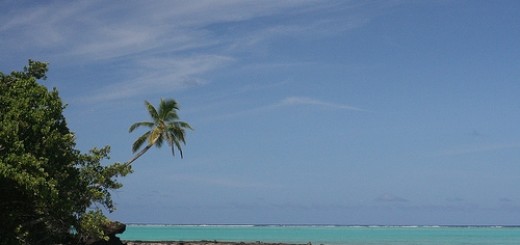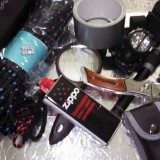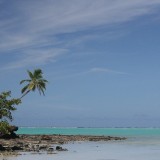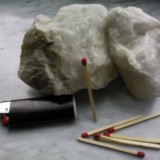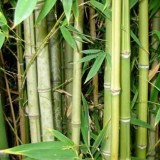THE SURVIVAL KNIFE
THE SURVIVAL KNIFE
For all those who move for a camping, for a trip away or in a hostile environment devoid of luxuries and comforts we are used to, it’s always advisable to bring equipment and clothing suitable for the area where you will go.
An essential object that should never miss in your survival equipment is certainly THE SURVIVAL KNIFE.
Having a knife, in a survival situation, can make a difference. On sale there are different types and is easy to get lost in the purchase. We can say that in case of need any tool capable of cutting there may be useful (also a table knife!). But if you buy it one, you have to consider a few things… one in the first place is:
Why we need a knife? Fishing, hunting, mushrooms, survival, …?
but also
Where do we need to go? Forest, mountain, savanna, jungle, …?
Surely the factors to be considered, in addition to cost, are:
- The blade material: among the best materials we find stainless steel (INOX) and carbon (carbon steel).
The blade should be possibly anti rust; as regards the stainless steel blades, this problem does not exist, (this type of steel does not rust if not in contact with noxious products), while iron and carbon rust.
The carbon blade is lightweight and very durable, it sharpens quickly but the sharpening doesn’t last long. The stainless steel blades are more hygienic, sterile and resistant to corrosion in the most varied conditions.
- The quenching of the blade: the temperature, in the production, is very important as it determines the hardness and the consistency of the blade, thus also the length and quality of the sharpening.
If a blade is not quenched sufficiently, it will not hold up well sharpening but will be more flexible, if instead it is quenched too, will tend to chip easily or break if used improperly (for example to make lever) but it will be harder and sharper.
The hardening of the metal during the production phase can be controlled using specific scales. The Rockwell scale is used to determine the indentation hardness of a material, for example a blade between 55 and 58 Rock-well (HRC) is a good compromise for a knife for hike or hunt. There is also the Vickers scale for testing the hardness of materials.
- Shape, size, dimensions and weight: a good knife should be light but strong, not excessively big, comfortable and not too long.
Although these specifications are not good for some uses; for example, in the tropics is famous the use of machetes (long blade, often over 60 cm) and large double-edged blades. The ideal size of a blade is approximately from 8 cm to 15cm, maximum 20.
To avoid breakage of the knife in half the height of the handle is always better to choose knives where the blade and the handle are a whole (in practice a single piece). These knives are called Full Tang.
The tang must be covered with a durable handgrip and easy to handle, preferably screwed and not glued so that you can easily replace.
The wooden handle is certainly the most proposed although there are materials such as Micarta, G10, G11, FR-4 and FR-5 equally excellent. Avoid handles in metal or plastic poor.
The knife has to fit perfectly to the shape of your hand to be as effective as possible (that’s also why the choice of the knife is subjective and personal).
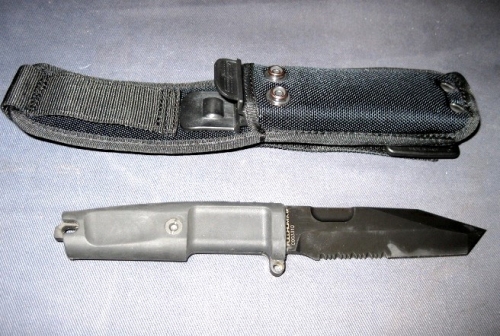
Accessories: if you want a knife that includes accessories for survival; you can opt for a product that contains at least the majority of these objects:
- compass,
- tablets for potable water (optional),
- fishing equipment (nylon and hooks),
- phosphorus matches windproof and moisture-proof,
- flint,
- hacksaw,
- razor blade,
- altimeter (optional),
- mini-harpoon (optional),
- mini-spear (optional),
- tourniquet (useful, for example, attached to a forked branch can make a slingshot to hunt small animals),
- whistle,
- magnifying glass to start a fire (optional),
- small hammer (optional),
- shear cutters,
- screwdriver (optional),
- sharpening stone or sandpaper,
- needle and thread to suture,
- scalpel (optional),
- sewing kit (needle, some thread of cotton or nylon, some buttons, a safety pin),
- magnesium bar (produced sparks to start a fire by rubbing against the blade of the knife),
- Morse code table and international rescue signal code,
- mirror for signalling “heliograph” (alternatively the knife blade clean can reflect sunlight),
- ruler (behind the sheath can also be printed a ruler with different units of measure for the measurements),
- rope (at least 10 meters, tied around the sheath),
- in addition to the knife, in the sheath it can be packed a further survival multiuse blade which can be useful as a harpoon, corkscrew, line cutter; and if there are holes you can use to tie it to a stick and create a spear.
A complete knife should contain almost all of these objects situated between the sheath and the inner handle.
The sheath for example can be coated with a lanyard military, useful to replace shoelaces worn, make traps, do bindings for the construction of various tools, to build a shelter, etc. Remember that knew how to make knots is very important, take a look at this article: how to make knots.
The blade can also have a side serrated, which could be useful as a saw.
A good knife has a non-slip handle and an upper compartment watertight for put inside objects that may be damaged by contact with water (objects can also be placed in plastic bags with hermetic closure).
In an unforeseen situation of survival surely you will not have a knife, in this case, necessity is the mother of invention.
Depending on where we are, we can obtain a makeshift knife sharpening a piece of bamboo or using a sharp stone.
The waste can be an excellent resource exploitable, now with global pollution we can find trash all over the globe, for example you can create a blade from a can, a metal sheet, or from the glass of a bottle.
The basic rule is “observe”, have an eye for detail, use the talent but also the imagination … with these premises we can use the land and the elements around us it at will.
SOME USEFUL ADVICE:
- Keep the blade with care, removing stains, sticky substances: organics or vegetable, and rust. A rusty knife loses its effectiveness in cutting, furthermore the rust will “eat” literally your knife.
- Keep the knife always clean, dry and sharpened and do not use it on things that could damage it or break it.
- Do not leave it in contact with the soil; moisture and dirt damage the blade.
- Keep the knife away from fire.
- You can clean the knife with ash or sand. Always clean it after each use will greatly increase the longevity of the knife. After each use, clean the blade, dry it and store it back in its sheath. Put a little oil on the joints; in this way the blades will open more easily.
- At low temperatures the blade tends to become fragile, keep it close to body heat to keep it from freezing. Avoid violent blows against hard objects or the blade will break. Also avoid sudden temperature changes (if you put the blade frozen on the flames it could break). If the blade is too cold could stick to the skin, if you happen, don’t try to pull the blade because you could lacerate the skin and cause you large wounds, in this case the best solution is urinate or pour a hot liquid gradually on the interested area.
- Sharpening should be moderate but made frequently.
- To sharpen you can use: a stone, the blade of an other knife, or any other metallic object. The best stone to be used is porous (gray stones and siliceous quartz are better, for example are great the smooth stones found in the bed of a river), but if you have a professional stone for sharpening or two strips of ceramic (one rough and one honed) better! Before sharpening the blade lubricated using vegetable oil, it’s fine also water or saliva.
- If the handle or the blade are broken don’t despair, in a survival situation not throw anything away; even if the blade is broken it can still be used to make some cuts. If the handle is broken, you can stick the knife at a piece of resistant wood or rebuild it with a plastic preheated, if you find it.
- For more information on survival knife: see here.

